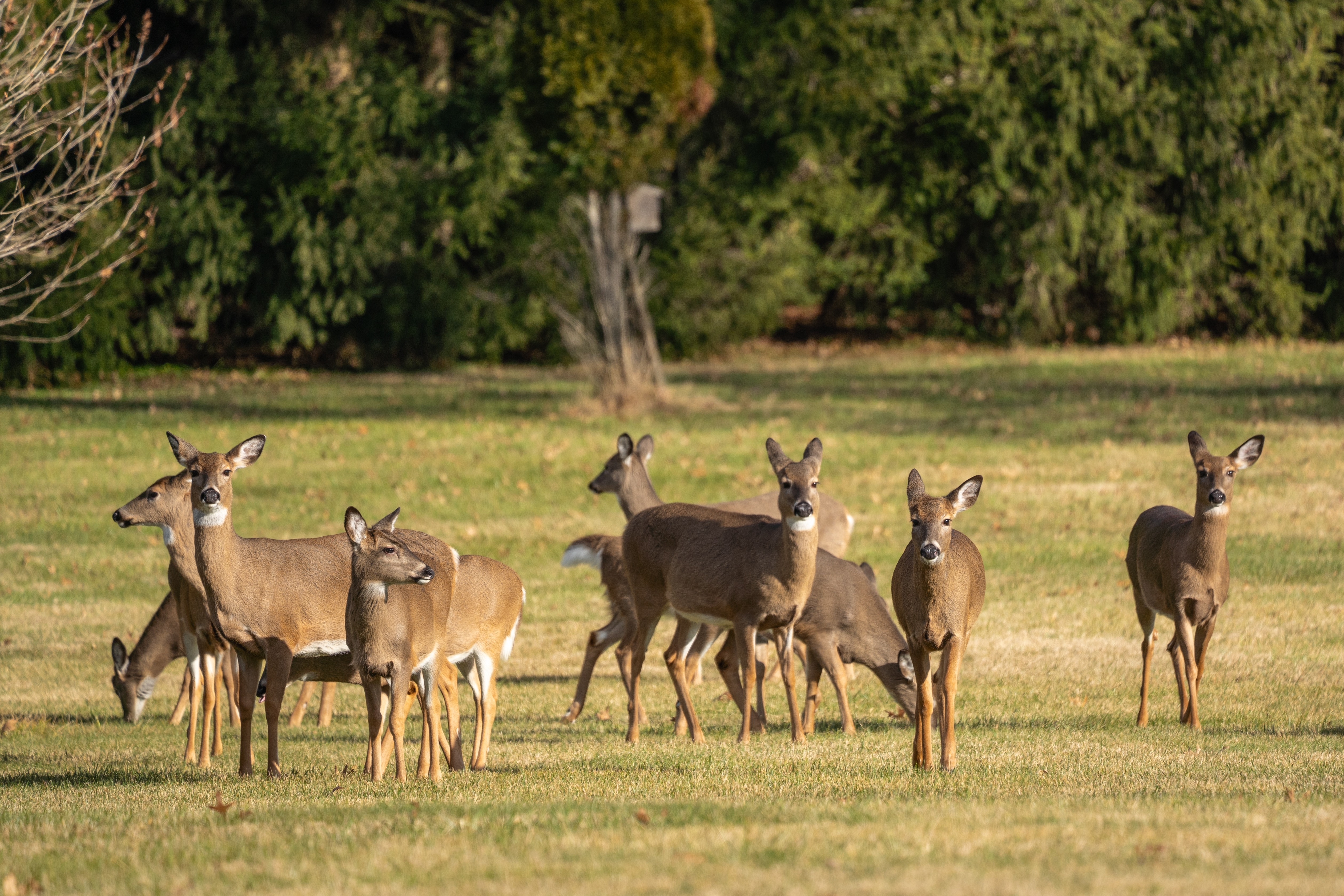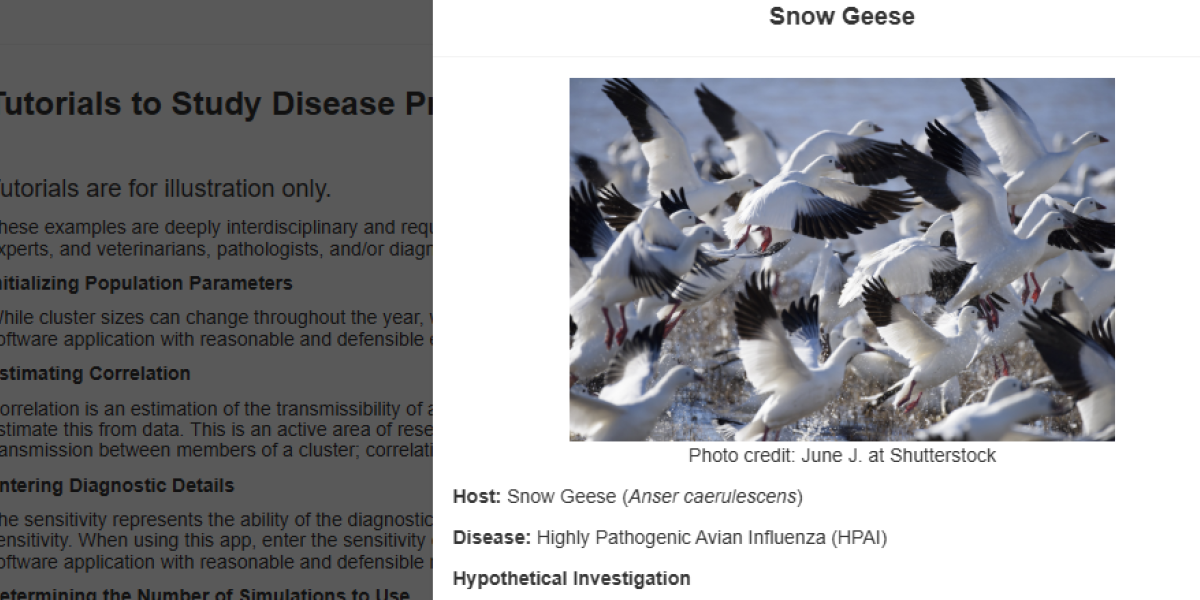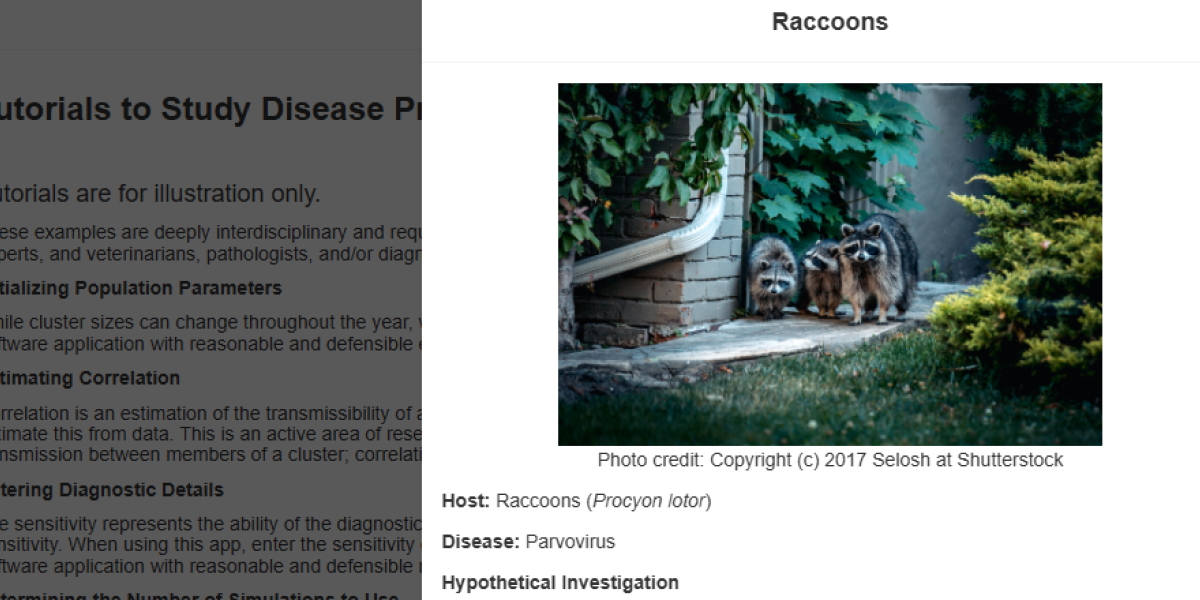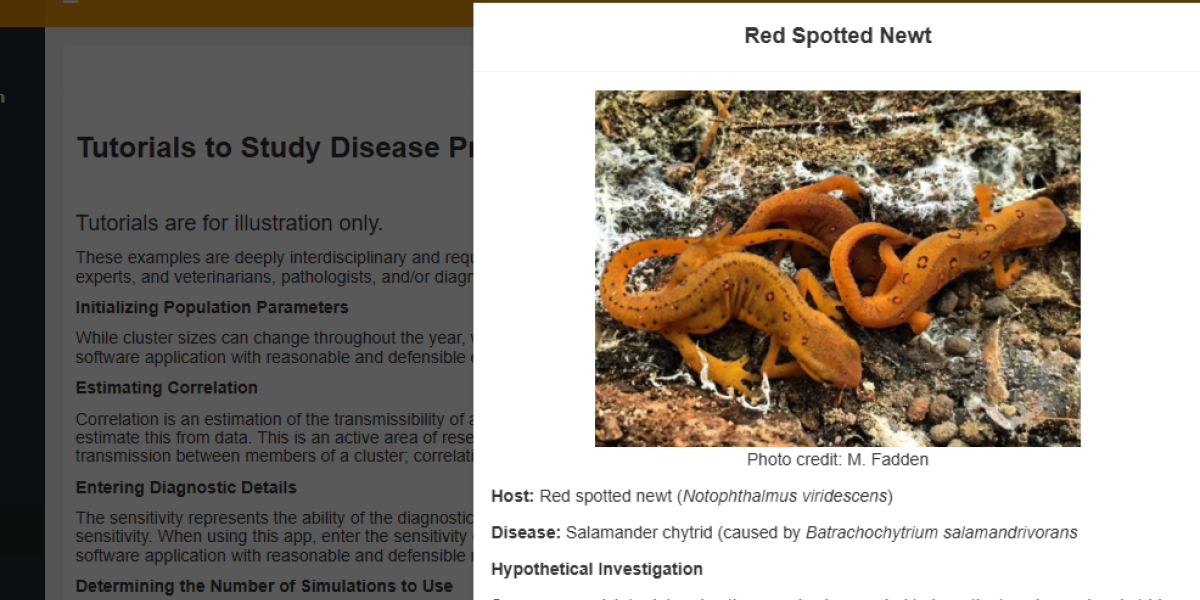Wildlife, just like people, cluster into social or family groups.
And just like people, animals pass their diseases around to others sharing their group.
Given these two facts, we derived novel statistical equations that consider this grouping effect on the sample size needed to conduct robust disease investigations. Turns out, the natural clustering tendencies of wildlife can be leveraged to reduce the number of animals we need to test to declare the entire population free from disease. In some cases, savings can exceed 75% over sampling methods that assume hosts are independent in disease status!
Our new interactive software lets managers enter population parameters (size and clustering behavior) and then computes target sample sizes for any species of interest.
Click the link below to explore the interactive app. While you are there, explore the myriad of example wildlife/disease systems.
The statistics of clustering behavior is yet another way that math can be used to describe nature.
Nearly every free-ranging population clusters together from time to time. This new way of thinking about clustering when computing sample sizes can reduce cost in wildlife health investigations, allowing for more scientific investigation with less. All thanks to the animals for finding each other!
Ample tutorials are available in the app to guide you through using it in wildlife health. The app is also directly applicable for computing sample sizes in agricultural health, as well as in human health.
Citations
Booth J, Hanley B, Thompson N, Gonzalez-Crespo C, Christensen S, Jennelle C, Caudell J, Delisle Z, Guinness J, Hollingshead N, Them C, Schuler K. 2025. Management agencies can leverage animal social structure for wildlife disease surveillance. Journal of Wildlife Diseases. 10.7589/JWD-D-24-00079
Booth J, Hanley B, Hodel F, Jennelle C, Guinness J, Them C, Mitchell C, Ahmed S, Schuler, K. 2024. Sample size for estimating disease prevalence in free-ranging wildlife: a Bayesian modeling approach. Journal of Agricultural, Biological, and Environmental Statistics, 29, pages 438–454. 10.1007/s13253-023-00578-7.








